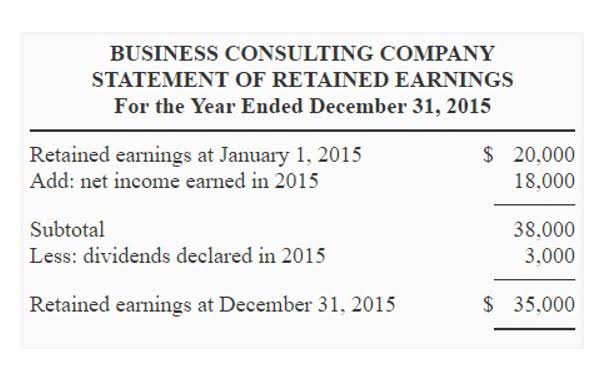Demystifying Accrual-Basis Net Income: A Comprehensive Guide for Investors

That gain might make it appear that the company is doing well, when in fact, they’re struggling to stay afloat. Operating net income takes the gain out of consideration, so users of the financial statements get a clearer picture of the company’s profitability and valuation. Also referred to as “net profit,” “net earnings,” or simply “profit,” a company’s net income measures the company’s profitability. The good news how is sales tax calculated is it’s just as easy to calculate net income whether your business uses the accrual or cash method of accounting.
Do you already work with a financial advisor?

The accruals are made via adjusting journal entries at the end of each accounting period so the reported financial statements can be inclusive of these amounts. Use the following approach to calculate income and expenses for your business using the accrual accounting method. Under accrual basis accounting, you would report income for the time period when it is earned, even though you may not be paid during the same fiscal period. Expenses are deducted during the period when they are incurred, even though you may not pay them during that time.
Ask Any Financial Question

Accrual basis accounting is a method of accounting where revenues and expenses are recognized and recorded when they are earned or incurred, respectively, regardless of when cash is received or paid. This approach is used to match the costs of producing revenues with the revenues themselves, providing a more accurate representation of a company’s financial performance. The expense matching principle is a fundamental concept in accrual basis accounting, ensuring that expenses are recorded in the same period as the revenues they help generate. This principle provides a more accurate depiction of a company’s profitability by aligning costs with the income they produce. For instance, if a company incurs costs to produce goods that are sold in a particular month, those costs should be recorded in the same month as the sales revenue. This alignment helps in presenting a true picture of the company’s financial performance.
Accrual Accounting vs Cash Accounting : Key Differences
The 2023 financial statements must reflect the bonus expenses earned by employees in 2023 as well as the bonus liability the company plans to pay out. An adjusting journal entry therefore records this accrual bookkeeping and payroll services with a debit to an expense account and a credit to a liability account before issuing the 2023 financial statements. An accrual is a record of revenue or expenses that have been earned or incurred but haven’t yet been recorded in the company’s financial statements. This can include things like unpaid invoices for services provided or expenses that have been incurred but not yet paid. Accurately tracking a business’s financial performance is crucial for making informed decisions. One effective method for achieving this is by using the accrual basis net income formula.

Financial
- That’s why this accounting method is required by GAAP for publicly traded companies and is favored by many businesses looking to get a clear view of their financial standing.
- Dissimilarly, in the cash basis of accounting, revenues and expenses are not recognized until the cash is received or paid.
- Previously, we demonstrated that financial statements more accurately reflect the financial status and operations of a company when prepared under the accrual basis rather than the cash basis of accounting.
- These articles and related content is the property of The Sage Group plc or its contractors or its licensors (“Sage”).
- Accrual accounting is a method that recognizes revenue and expenses when they are incurred rather than when cash actually changes hands.
- Once all the revenue and expenses have been identified, the net income can be calculated by subtracting the total expenses from the total revenue.
Good accounting software, like Sage Intacct, simplifies this process by automating accruals, tracking revenue and expenses, and generating reports in real time. This automation not only saves time but also reduces the risk of errors, ensuring accuracy across all accounts. Accrual-based accounting helps match expenses directly to the revenues they support, giving you a clearer view of profitability.
- Accrual-based net income relies on estimates and judgments made by management regarding future events such as revenue recognition and expense accruals.
- By comparing different periods, you can identify patterns or anomalies that may require attention or adjustment.
- It may recognize accrued income monthly for subscriptions that are billed annually.
- By tracking revenue and expenses as they are earned or incurred, rather than when cash changes hands, this formula provides a more accurate representation of a company’s financial performance.
- Accrual accounting is based on the matching principle, which matches expenses with revenues in the same accounting period, regardless of when cash is received or paid.
- Now you’re equipped with this knowledge, you’re one step closer to steering your business toward financial success.
How to Calculate Net Income (Formula and Examples)
- But to reiterate, the industry in which the company operates sets the “benchmark” to determine if a company is more profitable (or less profitable) relative to its peers.
- An auditor, on the other hand, would be concerned with the verifiability of accrued income claims.
- Net income, on the other hand, includes all revenues and expenses of the business regardless of whether they form part of the main operating activities.
- As organizations scale and work towards enhancing their customer experience, they leverage multiple payment methods and payment terms, which makes revenue recognition all the more complex.
BluePrint Design Studio is an interior design company, that has completed a project for a client in September worth $8,000. They invoice the client at the end of the month, with a payment deadline of October 31. Under the accrual basis, BluePrint records the revenue in September when cash basis accounting measures income based on the service was completed, not in October when payment is received.

This method ensures that financial statements reflect all the revenues earned and expenses incurred during a period, providing a more accurate picture of a company’s financial position. Accrued income, often considered an indicator of earning quality, plays a pivotal role in the representation of a company’s financial health. It is an accounting concept that denotes income earned but not yet received, and its recognition is a fundamental application of the accrual basis of accounting. The effect of accrued income on financial statements is multifaceted and can provide valuable insights into a company’s operational efficiency and future cash flows. From the perspective of an accountant, accrued income is essential for matching revenues with expenses in the period they occur, regardless of when the cash transactions happen.

Dejar un comentario
¿Quieres unirte a la conversación?Siéntete libre de contribuir